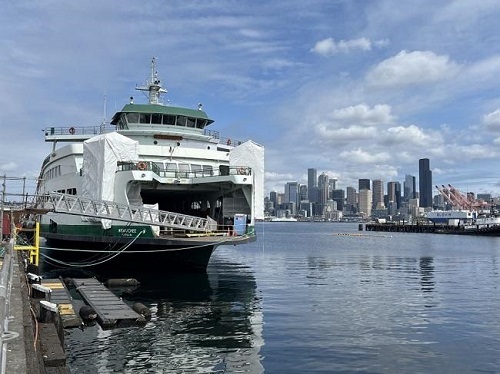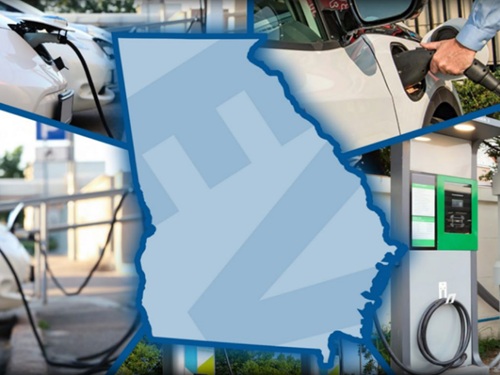The Washington Department of Transportation reports that work is progressing on the propulsion system conversion and refurbishment of the agency’s Wenatchee ferry; an overhaul that should be completed by the summer of 2025.
[Above photo by WSDOT]
Washington State Ferries (WSF) – a division of WSDOT – awarded a $150 million contract to shipbuilding firm Vigor in 2023 to convert its three Jumbo Mark II class ferries to hybrid-electric power along with other upgrades, ensuring the vessels remain reliable for their 60-year lifespans.
Those three ferries – the Wenatchee, Tacoma, and Puyallup – were originally built in 1998, 1997, and 1999, respectively.
With a capacity for 202 vehicles, WSDOT said the Wenatchee is currently the largest passenger ferry in the U.S. undergoing an “electro-propulsion” refit.
“There are no issues with the technology itself, but as is common with major vessel retrofits, we have faced some challenges in working this new technology into the existing vessel,” noted Matt von Ruden, administrator for the WSF System Electrification Program, in a statement.
“Working with Vigor, we have largely tackled these issues and are now preparing for system commissioning. We’re also applying our lessons learned for the subsequent vessels,” he said.
Major work completed to date on Wenatchee includes removal of two propulsion diesel generators, installation of electric power conversion and distribution equipment, upgrades to obsolete propulsion control equipment, reconfiguration of piping systems, and build-out of two new battery rooms.
Ongoing work includes installation of thousands of feet of electric and fiber optic cable and, from there, the battery modules will be installed, and crews will begin to bring the ferry back to life, WSDOT said.
[Editor’s note: The Texas Department of Transportation recently released a “behind the scenes” video about Captain David Askew, a 12-year agency veteran who currently serves as ferry deck supervisor in Port Aransas, TX.]
The agency stressed that this overall “commissioning” process is a “highly structured sequence” of energizing system components and testing them to ensure they operate as designed.
After Vigor’s work is complete, WSF said it will need approximately four weeks to put Wenatchee through its paces with additional system checks and sea trials, as well as training for the vessel crews. The Tacoma conversion will not begin until the Wenatchee returns to service.
“The benefits of this program are substantial,” said von Ruden. “When these propulsion upgrades are complete, the Wenatchee will emerge with improved reliability, increased efficiency and reduced emissions.”
Other state departments of transportation are working to deploy “greener” ferry boast as well.
For example, in March, TxDOT put its newest maritime ferry into service on the Galveston-to-Port Bolivar route; naming the new vessel after a pioneering figure in Texas transportation infrastructure: Esperanza “Hope” Andrade.
The new $33 million vessel, which measures 293 feet long, is one of seven in the Galveston ferry fleet and the newest addition in over a decade. The new ferry also features “cleaner” propulsion technology, TxDOT said at the time, marrying together a diesel-electric transmission and lithium-ion battery to reduce diesel engine emissions while improving fuel-efficiency.
 Electric Vehicles
Electric Vehicles



